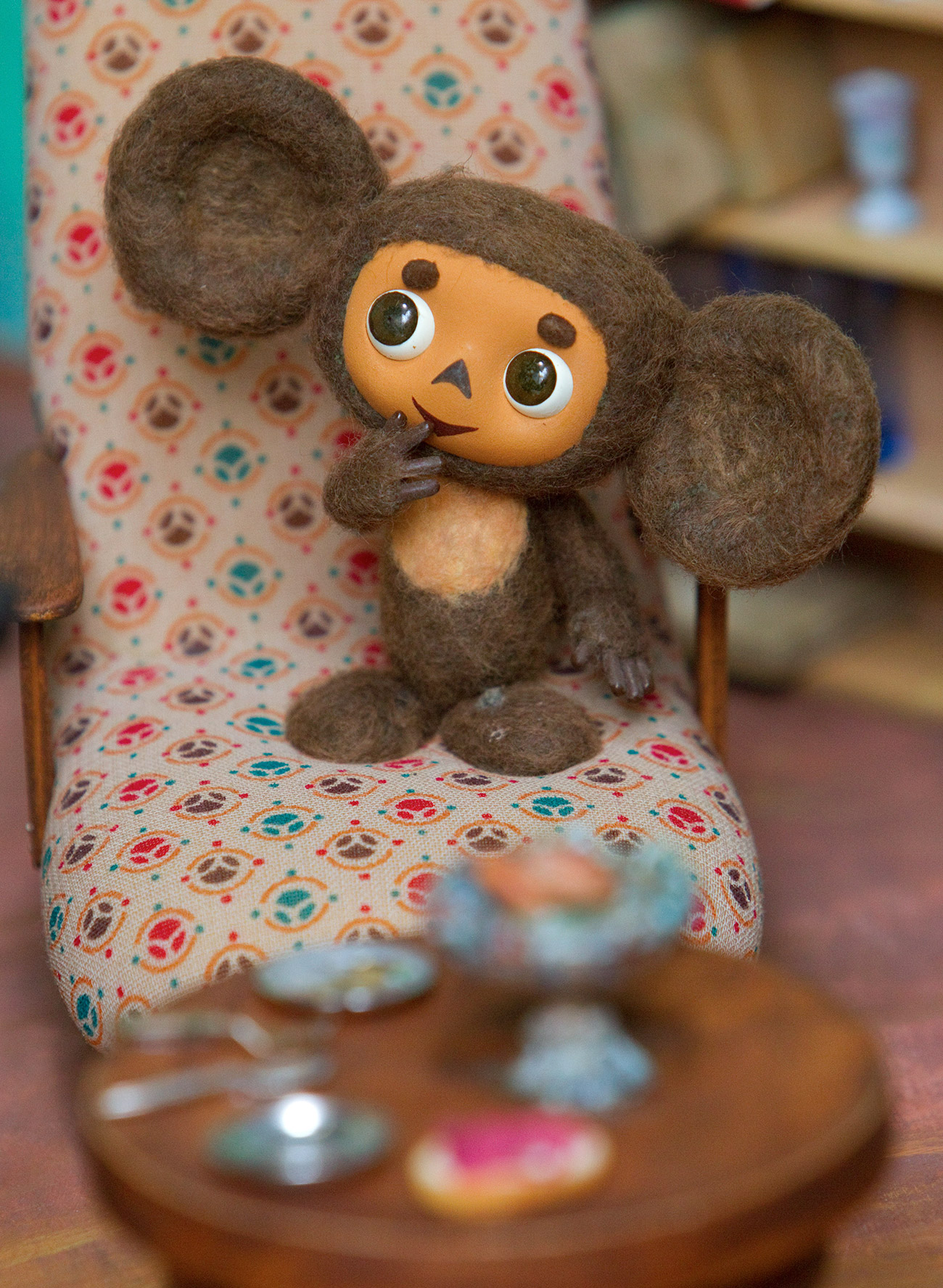Cheburashka: 10 fun facts about Russia's iconic furry character (PICS)

1. He was created by writer Eduard Uspensky

“Cheburashka is an orange-eating animal unknown to science, with a touching character, increased fluffiness and large ears. Incredibly energetic, despite general cluelessness,” is how children’s book writer Eduard Uspensky described Cheburashka, the fairy tale character he invented in 1966.
Despite their venerable age, Cheburashka and his friend Crocodile Gena are still familiar to all children in Russia today.
2. The name was chosen by chance

According to Uspensky, the name of his strange animal, which first arrived in the Soviet Union from a country full of rainforests inside a box of oranges, was coined by accident. “I heard a pal of mine use the word ‘cheburakhnutsya’. He used it to mean 'to fall' or 'to stumble'. The word got stuck in my head, and later transformed into the name of the character.”
3. The huge ears did not appear immediately
 Art director Leonid Shvartsman
Art director Leonid Shvartsman
Cheburashka received his current recognizable image only in 1971: he was drawn by animator Leonid Shvartsman. “There was no mention of ears in the book, so, at first, I drew them on the top of his head, as with all animals, but then, as I started making them bigger, they 'slipped down' to the sides and became more like human ears rather than an animal's. Before we started filming, Cheburashka's stop-motion puppet actually had short legs, but the puppeteers were having trouble with this, so we removed them, leaving only his feet; with this, Cheburashka became even more unusual. And when we removed his tail, he basically turned into a mostly human child,” the artist recalled.
4. Cheburashka's friend is a crocodile
 Director and scriptwriter of cartoons Roman Kachanov.
Director and scriptwriter of cartoons Roman Kachanov.
The second protagonist, both in the original books and in the cartoon adaptations, is Gena the Crocodile, who “works as a crocodile in the zoo”. Actually, this “gentle-natured, green-skinned” reptile actually was the protagonist of the very first book, Gena the Crocodile and His Friends.
5. Cheburashka has a different name abroad

Uspensky's book was translated into several languages almost immediately after it was published. The adventures of Cheburashka and Gena have been translated into English, German, Italian, Japanese and many other languages – over 20, in total. Interestingly, Cheburashka's name was different in each version: He became known as ‘Topple’ in the UK, ‘Plumps’ in Germany, ‘Drutten’ in Sweden, and ‘Muksis’ in Finland.
6. Cheburashka won particular fame in Japan

“The Japanese came in the early 2000s to acquire the rights to produce their own Cheburashka cartoons. They still send me scripts for approval and they are very happy when I begin arguing with them about their stories,” Eduard Uspensky said.
Several cartoons about Cheburashka have been released in Japan, among which were both re-shot Soviet animation, as well as a real Japanese TV show.
7. Athletes' mascot

Over the past 60 years since his birth, Cheburashka has become one of Russia's national symbols.
You can find bronze monuments to him from Moscow Region all the way to Khabarovsk. And, since 2004, he has become the mascot of the Russian Olympic team, changing the color of his fur along with the athletes' uniforms and, at the same time, a popular Russian souvenir with an incredible number of different outfits.
8. A household name
 XXII Winter Olympic Games in Sochi
XXII Winter Olympic Games in Sochi
In the USSR, the word ‘Cheburashka’ became a household name. For their somewhat visual similarity, it was used to name a variety of things – from the Antonov A-72 transport aircraft and the Zaporozhets car to full-size headphones.
9. An image in pop culture

In the 2000s, the popularity of Che Guevara as a counter-cultural symbol was affectionately parodied in Che Burashka – a mix between the Argentinian revolutionary and the fictional character. In those years, a huge number of T-shirts featuring ‘Che Burashka’ – wearing Guevara’s trademark beret, of course – were virtually everywhere.
10. Became a character of modern movies

Initially, the story of Cheburashka and Crocodile Gena was screened in the Soviet years, making several plasticine cartoons. But, nowadays, Cheburashka has become the hero of full-length movies for the whole family: the first part of the story about the furry beast found in a basket of oranges was released in 2023, while the sequel is due to come out in 2026.
“I can’t even hear about Cheburashka anymore,” Eduard Uspensky confessed. “Everything you find about him on the internet might be true. He's a fictional character, after all!”

